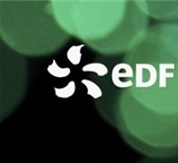Introducing $ab\ initio$ based neural networks for transition-rate prediction in kinetic Monte Carlo simulations
Résumé
The quality of kinetic Monte Carlo (KMC) simulations of microstructure evolution in alloys relies on the parametrization of point-defect migration rates, which are complex functions of the local chemical composition and can be calculated accurately with ab initio methods. However, constructing reliable models that ensure the best possible transfer of physical information from ab initio to KMC is a challenging task. This work presents an innovative approach, where the transition rates are predicted by artificial neural networks trained on a database of 2000 migration barriers, obtained with density functional theory (DFT) in place of interatomic potentials. The method is tested on copper precipitation in thermally aged iron alloys, by means of a hybrid atomistic-object KMC model. For the object part of the model, the stability and mobility properties of copper-vacancy clusters are analyzed by means of independent atomistic KMC simulations, driven by the same neural networks. The cluster diffusion coefficients and mean free paths are found to increase with size, confirming the dominant role of coarsening of medium- and large-sized clusters in the precipitation kinetics. The evolution under thermal aging is in better agreement with experiments with respect to a previous interatomic-potential model, especially concerning the experiment time scales. However, the model underestimates the solubility of copper in iron due to the excessively high solution energy predicted by the chosen DFT method. Nevertheless, this work proves the capability of neural networks to transfer complex ab initio physical properties to higher-scale models, and facilitates the extension to systems with increasing chemical complexity, setting the ground for reliable microstructure evolution simulations in a wide range of alloys and applications
Origine : Fichiers éditeurs autorisés sur une archive ouverte

